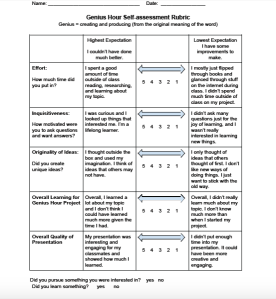Although I am not an education major, I come from a long family line of teachers. Everyone, and I mean everyone, in my family (grandmothers, aunts, and uncles included) are educators. For that very reason, I have always kept up to date on the latest classroom trends and newest teaching styles. I chose to dive into the idea of the flipped classroom because I feel that, had the idea been implemented, it would have greatly impacted my grade school experience, as well as my college classroom experience. At the most basic level, a flipped classroom is where a teacher provides some sort of video/electronic lecture as homework and during actual class time students practice and work on problems – i.e. what is traditionally thought of as homework.
I got a small taste of this practice my sophomore year at UGA when terrible snow storms caused a week of classes to be cancelled. My accounting professor knew she wouldn’t have enough time to catch up on all the lectures we had missed, so she recorded the general lecture, emailed it to us to watch at home, and proceeded to go through a few examples with us when we returned to class. Traditionally in accounting classes at UGA, the entire class time is spent on conceptual lecture and it is up to the student to work problems themselves at home. Getting to spend actual class time working on problems with my professor was a big deal, and a year later I still remember what I learned in those precious moments of class time. If this one time had such a big impact on my college career, I am positive the idea of a flipped classroom can and will greatly impact all levels of learning, especially K12 learning.
Although it seems like everyone should be hopping on this awesome “bandwagon”, implementing a flipped classroom is difficult. First, it can be costly. The idea is that learners will watch and/or listen to their teacher’s lecture at home on some sort of electronic device. Not all students have access to computers, tablets, etc. at home, so many school systems feel they are obligated to provide these to students. While many systems are already on board with providing children with netbooks and tablets for their time in grade school, for some school systems it just simply is not feasible. The funding is not available. This fault tends to lead to another. Though many teachers are ready to tackle a flipped classroom model, it can sometimes be difficult to sell the idea to administration. Administrators typically care just as much for their students’ education as teachers do (I promise they really do!), but they also have to balance these great ideas with the practicality of implementing them.
In order to look further into this topic, I hope to research the schools and classrooms that have already implemented this model. In some cases, entire school systems have switched to a flipped classroom. In other cases, there may just be one teacher in an entire county/city using this model. I want to see if there is enough of a support system for a teacher who may be “alone”, and if they feel it is something they will continue for many years. Also, time permitting, I would love to sit down with one or two of the many educators in my family and get there opinions on it. Being able to actually speak to someone who may have had the idea thrown at them would be an invaluable resource. Ultimately, I hope to answer the question: is the flipped classroom model a way for students to get a valuable, meaningful education and will it turn into a lasting teaching style, something perhaps my children and grandchildren will experience, or is just a trend that will be forgotten this time in a couple years?
For anyone interested in this topic, I highly suggest you follow @flippedclassrm, @flippedlearning, and @ChrisWaterworth. I also like to search the hashtags #flippedlearning, #flippedclassrooms, and #blendedlearning. Both the users and hashtags pull in research and ideas from all around the world making it fascinating to see what people are doing to integrate this model into classrooms everywhere.
